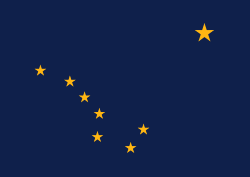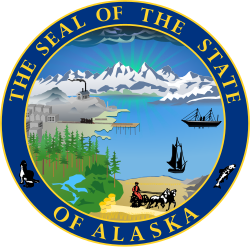
The following outline is provided as an overview of and topical guide to the U.S. state of Alaska:
Contents
- General reference
- Geography of Alaska
- Places in Alaska
- Environment of Alaska
- Regions of Alaska
- Demography of Alaska
- Government and politics of Alaska
- Branches of the government of Alaska
- Law and order in Alaska
- Military in Alaska
- Local government in Alaska
- History of Alaska
- History of Alaska, by period
- History of Alaska, by region
- History of Alaska, by subject
- Culture of Alaska
- The arts in Alaska
- Sports in Alaska
- State symbols of Alaska
- Economy and infrastructure of Alaska
- Transportation in Alaska
- Education in Alaska
- See also
- References
- External links
Alaska ( /əˈlæskə/ ⓘ ə-LASS-kə ) is a non-contiguous U.S. state on the northwest extremity of North America . Part of the Western United States region, it is one of the two non-contiguous U.S. states, alongside Hawaii . Alaska is considered to be the northernmost, westernmost, and easternmost (the Aleutian Islands cross the 180th meridian into the eastern hemisphere) state in the United States. It borders the Canadian territory of Yukon and the province of British Columbia to the east. It shares a western maritime border, in the Bering Strait , with Russia 's Chukotka Autonomous Okrug . The Chukchi and Beaufort Seas of the Arctic Ocean lie to the north, and the Pacific Ocean lies to the south. It is a semi-exclave of the U.S., and is the largest exclave in the world.







